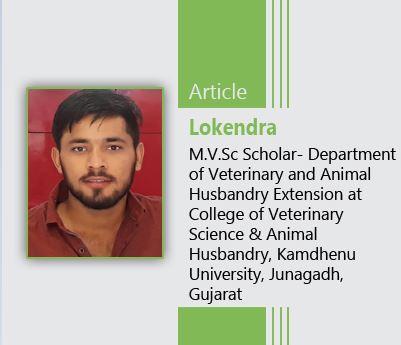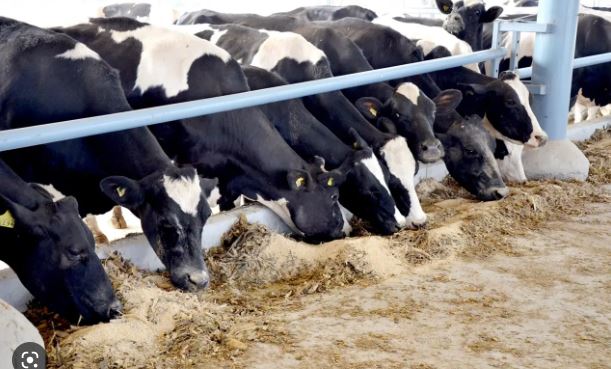Due to subzero temperatures (-10 ºC), frost, snow, and cold winds, the winter season’s uncertainties make it difficult to manage dairy cows effectively. Wintertime temperatures below zero have an impact on the efficiency and productivity of cows. Cows need to maintain a steady temperature of 38 °C because they are homo-thermic animals. Animals that are kept in the thermoneutral zone do not need to use more energy to maintain a comfortable body temperature. Cows experience cold stress when temperatures fall below the lower critical temperature, which is the lower end of this range. Cows that are under cold stress use more energy and have faster metabolisms. Stress brought on by the cold is amplified by a lack of fodder owing to pasture fields that are covered in snow and poor quality fodder.
| Animals | Lower Critical Temperature | Upper Critical Temperature | Comfort Zone |
| Cows | -5 ºC to -10 ºC | 25 ºC to 28 ºC | 13 ºC to 18ºC |
| Buffalo | -10 ºC to -15 ºC | 25 ºC | 10 ºC to 17ºC |
| Calf | 0 ºC to -4 ºC | 25 ºC | 15 ºC to 22ºC |
Effects of stressful winter on Dairy Animals
- Direct effects: It affects production, reproduction, body condition score, feed utilization and health of animal.
(a) Milk production: Cold exposure may limit the mammary gland’s synthetic capacity directly by lowering mammary gland temperature, or it may act indirectly by affecting the udder’s blood supply. A temperature of -11.2 ºC resulted in a loss of 2 kilogrammes per day per cow.
(b) Reproduction: Increasing age at first calving (AFC), lack of adequate follicular maturation, follicular atresia, loss of sexual desire, and lower pregnancy rates all prolong calving intervals and reduce bull fertility due to underfeeding.
(c) Body Condition Score: A higher body condition score helps cows protect themselves from winter stress and position themselves to reduce the amount of surface area exposed to inclement weather. Winter stress depletes body reserves, resulting in a loss of living weights and reversing weight increases acquired in the summer. Cows that lose more body weight (16%) are less likely to become pregnant again the following breeding season. Winter stress increases body oxygen consumption and cardiac output, as well as levels of growth hormone, cortisol, and other stress hormones. It also increases lipolysis, glyconeogenesis, and glycogenolysis, as well as hepatic glucose production and insulin response to glucose infusion. Animals’ dietary deficiencies can also lead to starvation and pregnant toxaemia.
(d) Health: Increases the risk of respiratory infections and hypoxia, weakens the immune system in poorly ventilated barns, raises basal metabolic rate, causes frostbite, asthma, sore throats, and coccidiosis, as well as hurdling, shivering, and lack of coordination.
- Indirect effects: It affects forage production, water quality and quantity; causes shelter over-burden and mud accumulation.
- Shelter and Mud accumulation: Need is – Procurement of effective shelter
- Poor shelter causes respiratory issues and reduces an animal’s effectiveness.
- Excessive shelter is expensive.
Mud is typically found in areas where animals are compelled to cluster, which can cause foot rot and thrush.
(b) Forage deficiency both in quantity & quality due to:
- Declining forage quality
- Frost, sun bleaching, CP levels dropping from 8–11% in the summer to 1-3% in the winter, and TDN dropping from roughly 80% to < 50% in succulent forages are all factors.
- Depletion of fodder resources since there is little land available for their production and climatic fluctuations.
- Water Shortage: decreasing water sources, drinking water availability, water quality declines, and decreased frequency of watering.
Strategies to manage winter vagaries
- Nutrition Management
- Increase the energy content (77% vs. 70 -72% TDN) and protein (17.5% vs. 14.5% CP).
- To raise milk fat content and lessen the impacts of cold weather, rations containing roughly 20% fibre as opposed to 17% fibre in animal feed are beneficial.
- For the season, animals housed outside will require 15–20% more feed than those kept in confined spaces.
2. Winter Provisions
- Concentrates: Feed Blocks, UMMB Licks, Cubes, Meals and cakes.
- Conserved Forage: Hay, Silage, Haylage, Leaf meal etc.
- Crop residues: Stover, Straw etc.
- Cultivated fodders: Paddy, Oat, Maize, Berseem, Leucerne etc.
- Fodder tree leaves: Willow, Robinia, Alanthus, Salix Populus, Ulmus and Acacia, Moras and Malus.
- Establishment of fodder banks: Forages that are in excess throughout the summer are collected, preserved, or brought from nearby states to make up for periodic shortages.
- Reduction of wastages by chaffing: 15-20% of the straw can be conserved from wastage by chaffing.
- Apple pomace: The dried apple pomace contains 1.86 Mcal/kg DM and 7.7% crude protein (CP). The best feed conversion ratios for the ensiled apple pomace are at 15% dietary inclusion.
- Molasses, poultry litter and maize grain can all be utilised as supplemental feed for cows or growing stock.
- Urea treatment of straws: The digestibility is increased by roughly five units when using fertilizer grade urea at a rate of 4–5%; however, the increase in digestibility is doubled when the material is ensiled for 10 days. Cows fed a meal consisting primarily of wheat straw that had been treated with urea gained more live weight than cows fed a diet consisting primarily of hay.
- Shelter Management: It is important to provide adequate shelters to protect against the prevailing cold winds.
- Providing heating resources, such as space heaters and blinds.
- To prevent body heat loss, bedding (4-6 inches for large animals and 2 inches for smaller animals) should be clean and dry on a concrete floor.
- The shed needs to be cleaned at least twice a day to ensure appropriate waste disposal and minimal ammonia gas buildup.
- Proper ventilation is necessary, and a relative humidity range of 40 to 80% is preferable.
- Calf blankets and jackets are very useful for preventing cold calves.
- The development of a snow removal plan is necessary since snow poses major feeding and bedding problems.
- Calving season should be moved earlier in the spring or summer to prevent cows from lactating late.
- Water Management: Water should be consumed when it is at least 47°C in temperature, and tank heaters should be employed to prevent water sources from freezing. Drinking enough water promotes good health and performance.
- Mud Management: Dairy management must consider rest periods appropriately for both production and welfare reasons. Dairy cows kept in confinement are supposed to sleep for about 12 hours per day, but if the conditions aren’t clean or comfortable enough, the cows will frequently stay up. Mud is typically found in areas where animals are forced to gather, which causes foot rot and thrush. Mud’s moisture can also increase the likelihood that parasites will survive.
- Health Management
- Vaccination, nutritional supplementation, and deworming protocols must be followed.
- Promote exercise by switching up where feeding and watering stations are located.
- Exercise can help avoid obesity and enlarged hooves.
- Avoid muddy, moist circumstances and manure contamination of feed because these factors raise the risk of coccidiosis.
- A teat dip powder will reduce the probability of teats getting frostbite during the cold winter.
- Inspect bruising on the soles, trim overgrown hooves, and do your best to avoid laminitis and lameness.
Conclusion
Within the thermoneutral zone, animals perform at their best in terms of production and reproduction. Animal performance is impacted by conditions above upper critical temperature and below lower critical temperature. To minimize this negative impact, management practices linked to nutrition, shelter, watering, mud accumulation, health, etc. are prioritized in order to prevent anomalies caused by cold stress; calving season is also postponed to late spring or early summer.

Lokendra¹*, Manisha Doot², Ankita Pal³
¹*M.V.Sc Scholar- Department of Veterinary and Animal Husbandry Extension at College of Veterinary Science & Animal Husbandry, Kamdhenu University, Junagadh, Gujarat
²Ph.D. Scholar- Department of Veterinary Public Health & Epidemiology at College of Veterinary and Animal Science, RAJUVAS, Bikaner, Rajasthan
³Ph.D. Scholar- Department of Livestock Production Technology at Indian Veterinary Research Institute (ICAR-IVRI), Izatnagar, Bareilly, Uttar Pradesh
*Corresponding author: Lokendra.jhang.95@gmail.com















